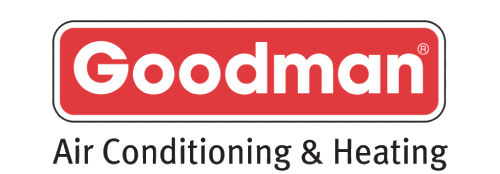Have you ever found yourself facing the sweltering heat of summer, only to realize your air conditioner has decided to take a vacation? You’re not alone. While certain air conditioner (AC) malfunctions demand the expertise of a professional, a surprising number of hiccups can be resolved with some savvy troubleshooting. This guide is your first step towards reclaiming your cool, comfortable space without necessarily waiting for expert intervention.
Key Insights You’ll Gain:
- Understanding Your AC System: Dive into the components that keep your home cool.
- Identifying Common Problems: Learn to spot the signs that your AC needs attention.
- Savvy Fixes: Step-by-step instructions to address the most frequent AC issues.
- When to Call the Pros: Recognizing when a problem is beyond a simple fix.
Armed with this knowledge, you’ll not only save time and money but also enhance your living comfort throughout the hotter months. Let’s embark on a journey to ensure your home remains a serene oasis, regardless of the temperatures outside. Transitioning smoothly into the heart of our topic, we’ll explore the essential steps to troubleshoot and fix common air conditioner problems at home.
Understanding Your AC System
Components of an AC System
An efficient air conditioning system comprises several key components, each playing a crucial role in cooling your home:
- Thermostat: Regulates the temperature, ensuring your system provides cool air when needed.
- Air Filter: Captures dust and debris, preventing them from entering your system and reducing air quality.
- Evaporator Coil: Absorbs heat from indoor air, a crucial step in cooling your home.
- Condenser Coil: Releases absorbed heat outside, completing the cooling cycle.
- Compressor: Circulates refrigerant between the evaporator and condenser coils, enabling the heat exchange process.
- Insulation: Surrounds refrigerant lines to prevent cooling loss, ensuring efficiency.
- Disconnect Switch: Provides a safety feature for maintenance or emergencies, allowing the system to be easily powered down.
Signs of Air Conditioner Problems
Be alert to signs that your AC might need attention. Recognizing these early can prevent more significant issues:
- Not Cooling Effectively: Indicates potential problems with the evaporator coil or refrigerant levels.
- Unusual Noises: Rattling or buzzing could suggest loose parts or obstructions.
- Strange Odors: Musty smells might indicate mold, while a burning scent could signal electrical issues.
- Blowing Hot Air: Often a sign of a refrigerant leak or a malfunctioning compressor.
- Increased Energy Bills: Unexpected rises in costs can suggest the system is working harder than necessary, possibly due to a dirty filter or airflow obstructions.
Regular maintenance checks can help identify and rectify these issues early, ensuring your air conditioning unit continues to operate efficiently, and providing comfortable, cool air throughout the warmer months.
Air Conditioner DIY Troubleshooting and Repairs
Safety First
Before attempting any repairs, prioritize safety by turning off the power to your AC unit at the circuit breaker. This precaution prevents electrical shocks and protects your system from potential damage.
Common AC Problems and Solutions
- Dirty Air Filter: A clogged air filter restricts airflow, reducing efficiency and cooling capacity. Check and replace your air filter regularly to maintain optimal airflow and improve indoor air quality.
- Faulty Thermostat: Ensure your thermostat is set to “cool” and the temperature is lower than the current room temperature. If issues persist, it may need new batteries or a recalibration.
- Refrigerant Leak: Low refrigerant levels can significantly impact your AC’s cooling ability. While refilling the refrigerant might seem like a solution, identifying and repairing the leak is essential for long-term functionality.
- Drainage Issues: A clogged condensate drain line can lead to water leaks and increased humidity inside your home. Regularly check and clear the drain line to ensure proper drainage.
When to Call a Professional
Beyond a Simple Repair: Recognizing When You Need a Pro
Tackling AC repairs can be a rewarding project, especially when dealing with straightforward issues like replacing a dirty filter in your central air system or clearing obstructions from around the outside unit of your window air conditioner. However, some problems extend beyond the scope of handcrafted efforts and necessitate a call to a professional.
This is particularly true for issues involving electrical components, refrigerant (freon) leaks, or intricate internal problems within your cooling system. If you find yourself uncertain about a repair, if the air conditioner stops working entirely, or if the unit may not work properly despite your best troubleshooting efforts, it’s time to seek out a certified HVAC repair technician.
Electrical issues, such as damaged wiring near your furnace or air handler, can pose significant safety risks. Similarly, refrigerant leaks not only prevent your system from producing cold air but also require handling substances like freon that are hazardous without proper training. Additionally, if your home air conditioner or central air conditioner is running constantly without adequately cooling your home, or if you’re experiencing problems with the fan motor or appliance receiving power, professional expertise will ensure that repairs are conducted safely and effectively.
Choosing the Right HVAC Professional
Selecting the right technician for your AC repair or HVAC system maintenance is vital for the comfort and safety of your home. Here’s how to ensure you pick the best:
- Certifications & Experience: Look for technicians skilled in central air conditioners, window air conditioners, and heating and cooling systems.
- Customer Reviews: Positive feedback is a strong indicator of reliability and quality.
- Clear Communication: A reputable technician will precisely diagnose issues and clearly explain the solutions.
Professionals in heating and air conditioning offer more than just repairs. They provide:
- Maintenance Tips: Guidance on cleaning coils, checking thermostats, and maintaining optimal airflow.
- Regular Check-ups: Advice on scheduling maintenance to prevent issues and extend your unit’s life.
- Tailored Solutions: Help with system upgrades or ensuring your setup meets your cooling needs, including sufficient space around your unit and condenser maintenance.
Preventive Maintenance Tips
Keeping Your AC Running Smoothly
Preventive maintenance is key to extending the lifespan of your AC unit. Schedule annual inspections with a professional, clean around the outdoor unit to ensure unobstructed airflow, and maintain at least 2 feet of clearance around the condenser for optimal performance.
Energy Efficiency Tips
Improving your AC’s efficiency not only cools your home more effectively but also reduces energy costs. Utilize thermostat settings wisely, seal and insulate ducts to prevent leaks, and consider upgrading to a more energy-efficient model if your current system is outdated.
Ensuring Your Home Air Comfort with Expert AC Care
Addressing common air conditioner issues like a dirty filter, clogged condenser coil, or leaky refrigerant is key to maintaining a cool, comfortable home. Regular checks, such as cleaning the condenser and ensuring proper airflow, are essential, but knowing when to seek professional help for more complex problems, like electrical faults or refrigerant leaks, is crucial. For those moments when DIY solutions aren’t enough, or if you’re unsure how to fix your problem, it’s time to call the experts.
In Las Vegas, Bob’s Repair is your trusted partner for all AC repair and maintenance needs. Whether you’re dealing with hot air blowing from your room air conditioner or need a comprehensive check of your central air system, our team is ready to help. Contact us at Bob’s Repair or CALL US: (702) 850-8088 to schedule an appointment. Let us take the heat off you this summer by ensuring your air conditioning unit runs smoothly and efficiently.










